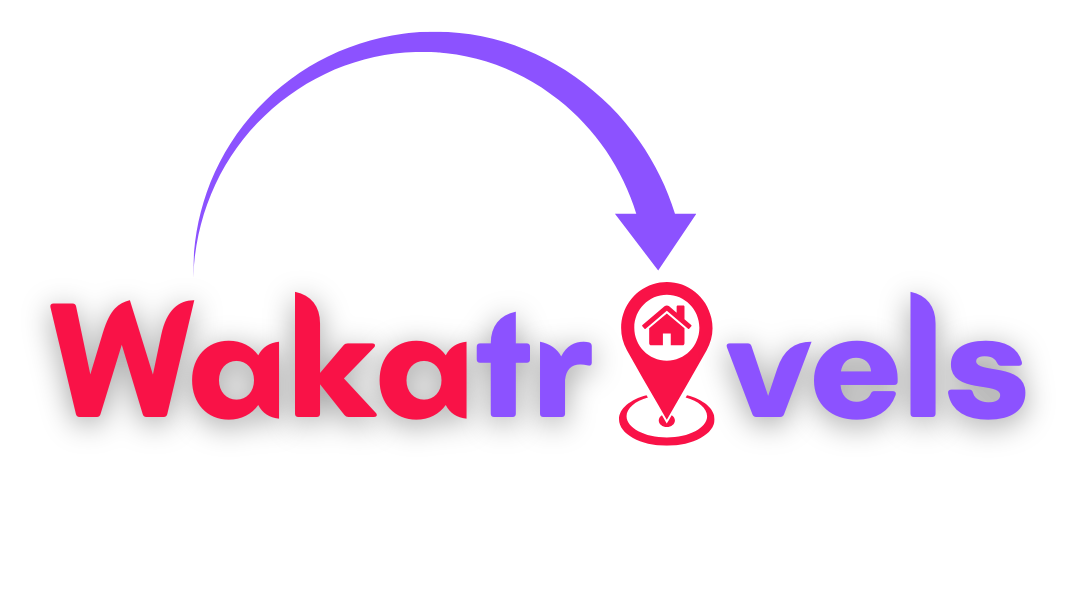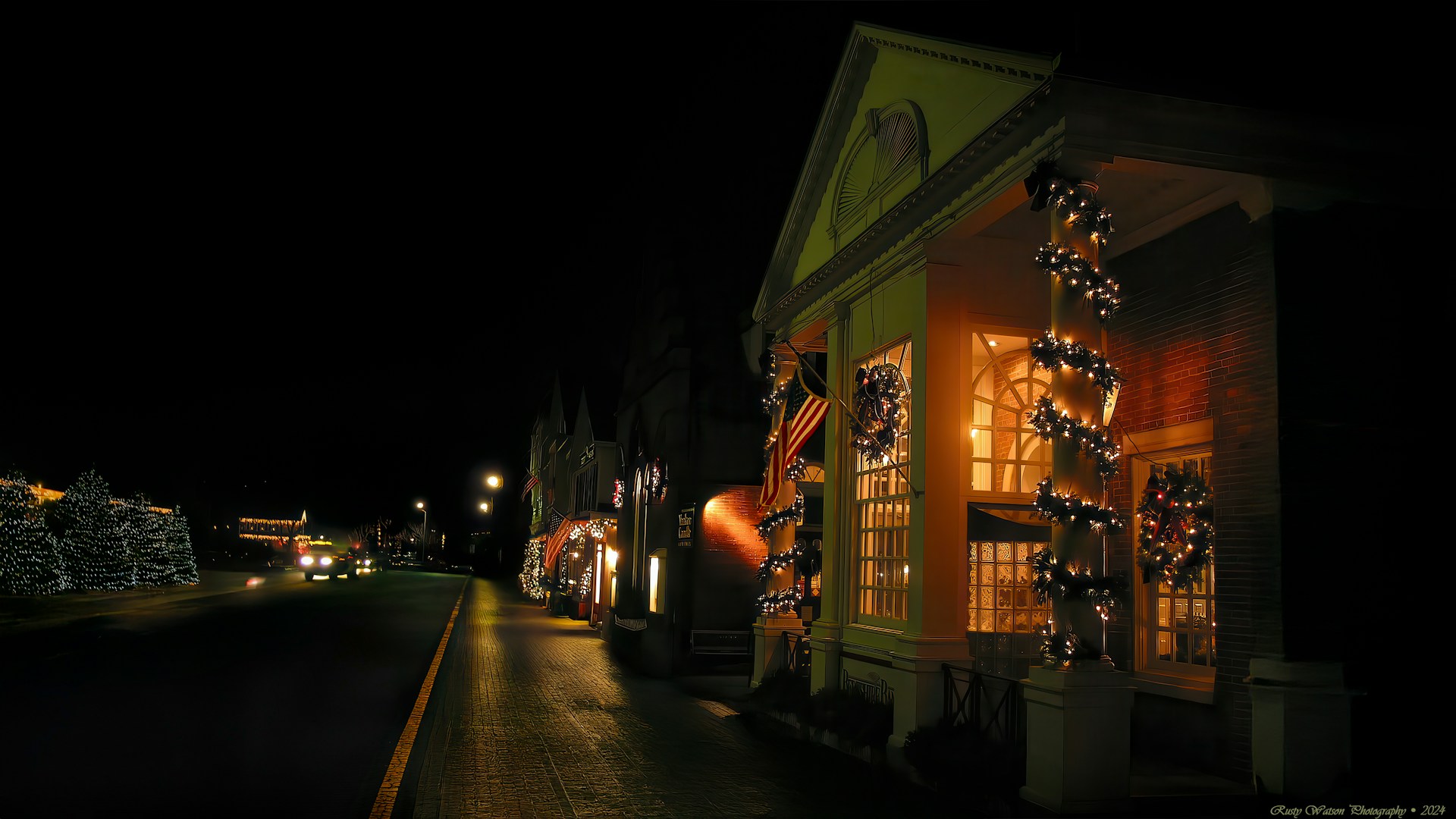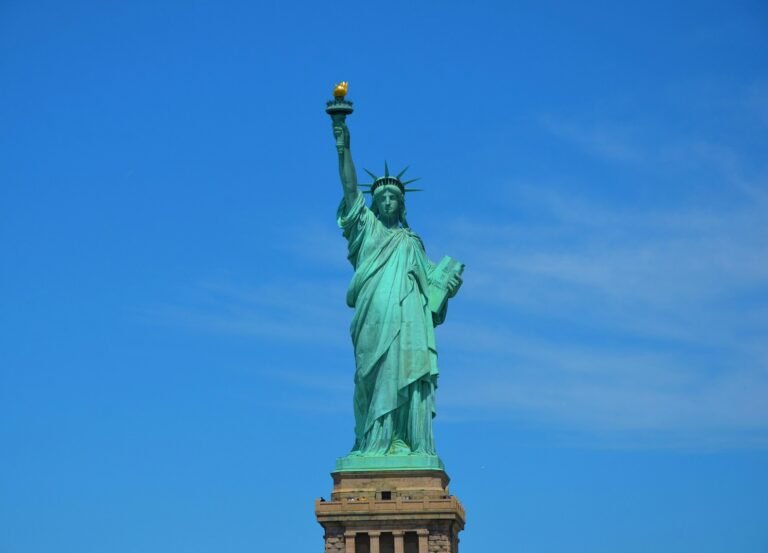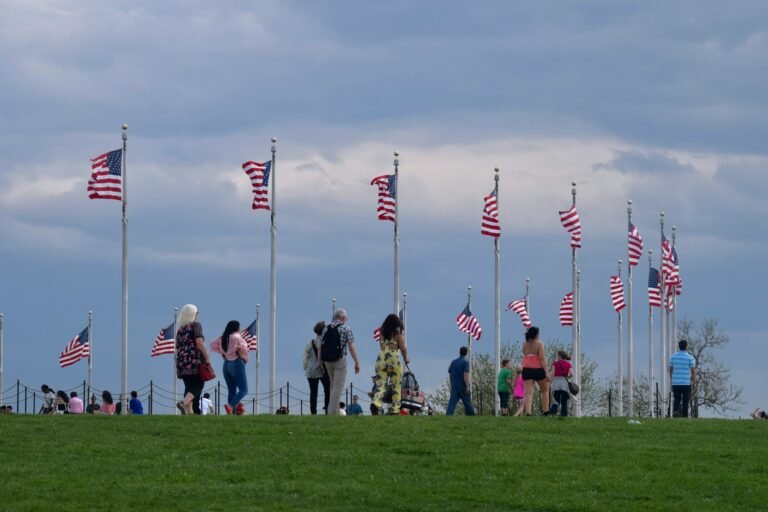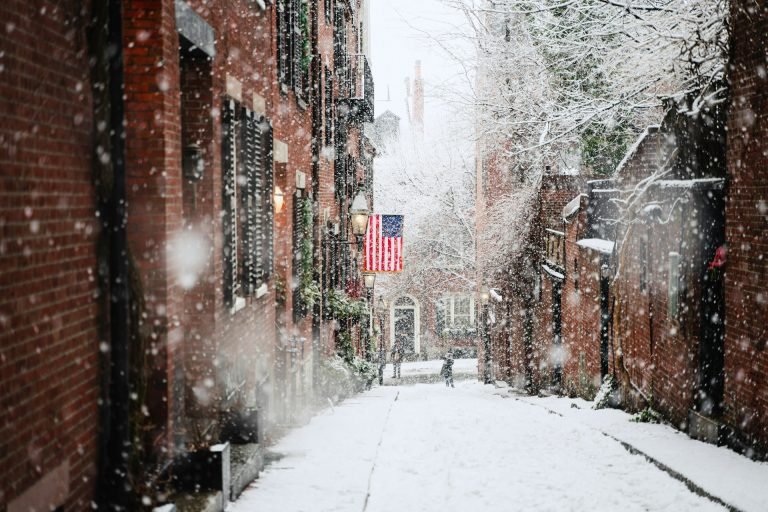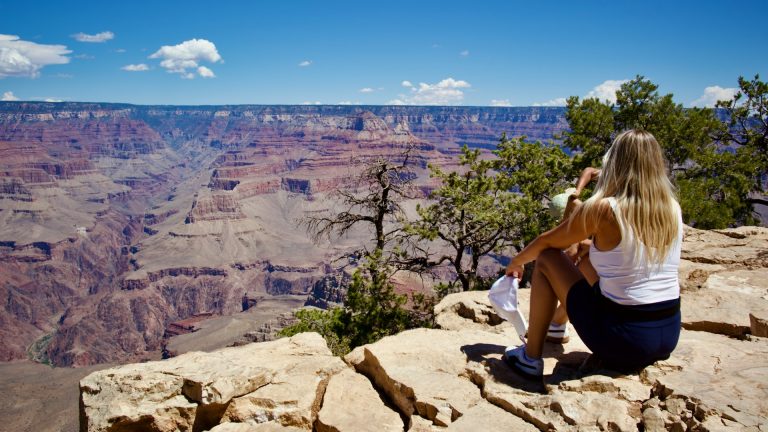I’ll never forget my first proper American winter experience. As someone who grew up in the tepid winters of Southern California, my understanding of “winter” was putting on a light jacket when temperatures dipped below 65°F. Then I spent a January in Vermont. Good lord, was I unprepared—both mentally and wardrobe-wise.
But that bone-chilling awakening sparked something in me. After cursing the cold for approximately 72 hours, I suddenly fell in love with it. The pristine snow blanketing everything in silent white, the satisfying crunch underfoot, and that peculiar winter smell—like the world holding its breath. I’ve been chasing that feeling ever since, venturing to snow-covered corners of the U.S. that transform into magical playgrounds when winter arrives.
If you’re looking to embrace the cold rather than escape it this winter, I’ve compiled my favorite American winter wonderlands that deliver the goods—whether you’re an adrenaline junkie on skis or someone who prefers their winter activities to end with a hot chocolate by a roaring fire. (Spoiler: I’m a bit of both.)
The Undisputed Champions of American Snow
1. Jackson Hole, Wyoming
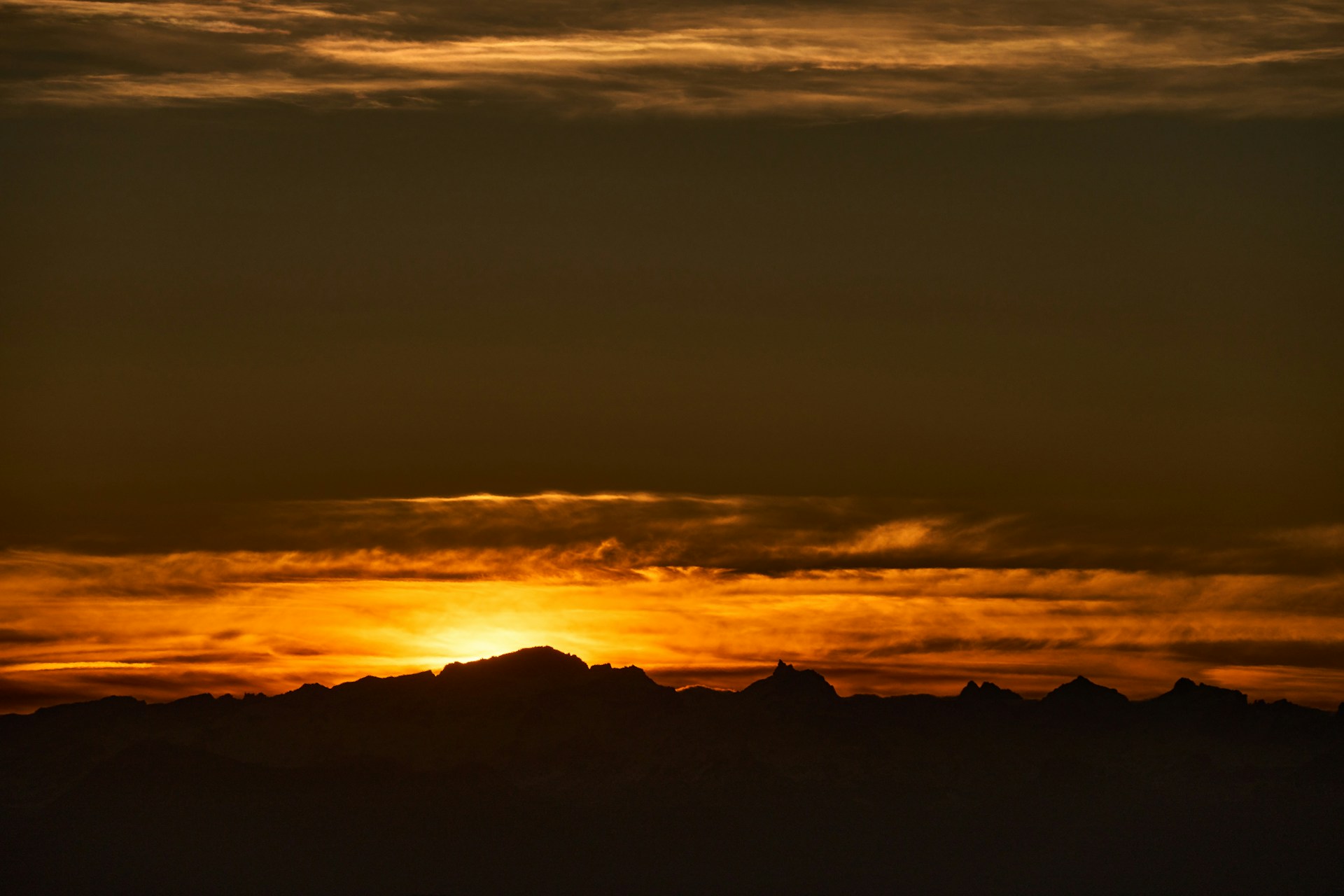
If snow had a kingdom, Jackson Hole would be its capital. Nestled against the majestic Teton Range, this valley delivers the kind of winter that snow purists dream about. With over 400 inches of annual snowfall, it’s basically the Godzilla of winter destinations.
The Jackson Hole Mountain Resort boasts some of North America’s most challenging terrain—so challenging that they literally had to create a symbol stronger than the black diamond. If you’ve never seen a double black diamond with a skull and crossbones, welcome to “experts only” territory that will make your knees wobble just looking at it.
But don’t let that scare you off if you’re not ready to test your life insurance policy. There’s plenty for intermediates and beginners too. And the town of Jackson strikes that perfect balance of Wild West charm and upscale amenities—think cowboy bars with $18 craft cocktails.
Beyond the slopes, the wildlife viewing is spectacular. The National Elk Refuge hosts thousands of elk in winter, and if you’re lucky, you might spot wolves, moose, or bighorn sheep while on a wildlife safari in Grand Teton National Park. I once spent an entire afternoon watching a wolf pack from a safe distance—one of those moments where you forget your fingers are numb because nature is putting on such a show.
2. Lake Tahoe, California/Nevada
Straddling the California-Nevada border, Lake Tahoe is the poster child for stunning winter landscapes. The massive alpine lake (the largest in North America) rimmed by snow-covered peaks creates vistas so beautiful they almost look fake—like someone went overboard with the saturation slider.
With over a dozen ski resorts surrounding the lake, you’re spoiled for choice. Palisades Tahoe (formerly Squaw Valley) and Alpine Meadows on the north shore hosted the 1960 Winter Olympics and still deliver world-class terrain. Heavenly on the south shore straddles the state line, meaning you can literally ski from California into Nevada—which I like to celebrate by stopping at the mid-mountain bar for a Nevada-side cocktail.
What sets Tahoe apart is its microclimate. The storms roll in off the Pacific and dump feet—not inches, FEET—of snow, often followed by brilliant blue skies. They don’t call it “bluebird days” for nothing. I once got caught in what locals call “Januburied” when five feet fell in a week. My rental car disappeared under a white mound, and I had to extend my stay by three days. Worst forced vacation extension ever, right?
The towns around the lake range from sleepy to lively. South Lake Tahoe offers casinos and nightlife on the Nevada side, while the north shore villages like Tahoe City and Truckee offer a more laid-back, mountain town vibe. Either way, you’ll never tire of that lake view—especially at sunset when the alpenglow turns the mountains pink.
3. Stowe, Vermont
If your idea of winter includes quaint New England villages, covered bridges dusted with snow, and maple everything, Stowe is your spot. The East Coast can’t compete with the Rockies for sheer vertical drop or powder quantity, but what Vermont lacks in elevation, it makes up for in charm and accessibility for the metropolitan East Coast crowd.
Stowe Mountain Resort spans two mountains—Mount Mansfield (Vermont’s highest peak) and Spruce Peak—connected by a gondola. The terrain is surprisingly varied, with everything from gentle cruisers to tight tree runs that will test your turning skills. And when those notorious “Northeast ice” conditions hit, their snowmaking and grooming operations are top-notch.
But the real magic of Stowe happens off the slopes. The historic village with its white church steeple could be straight out of a Christmas card. The restaurants serve farm-to-table fare that would make a Brooklyn foodie weep with joy, and the craft beer scene is legendary—this is the home of The Alchemist brewery, makers of the cult favorite Heady Topper IPA.
I stayed at a 200-year-old inn where each room had a fireplace, the floorboards creaked delightfully, and the innkeeper left freshly baked cookies outside my door each evening. It was like living in a Hallmark movie, minus the contrived romance plot (though I’m sure they could arrange that too, for an additional fee).
Under-the-Radar Snowy Gems
4. Leavenworth, Washington
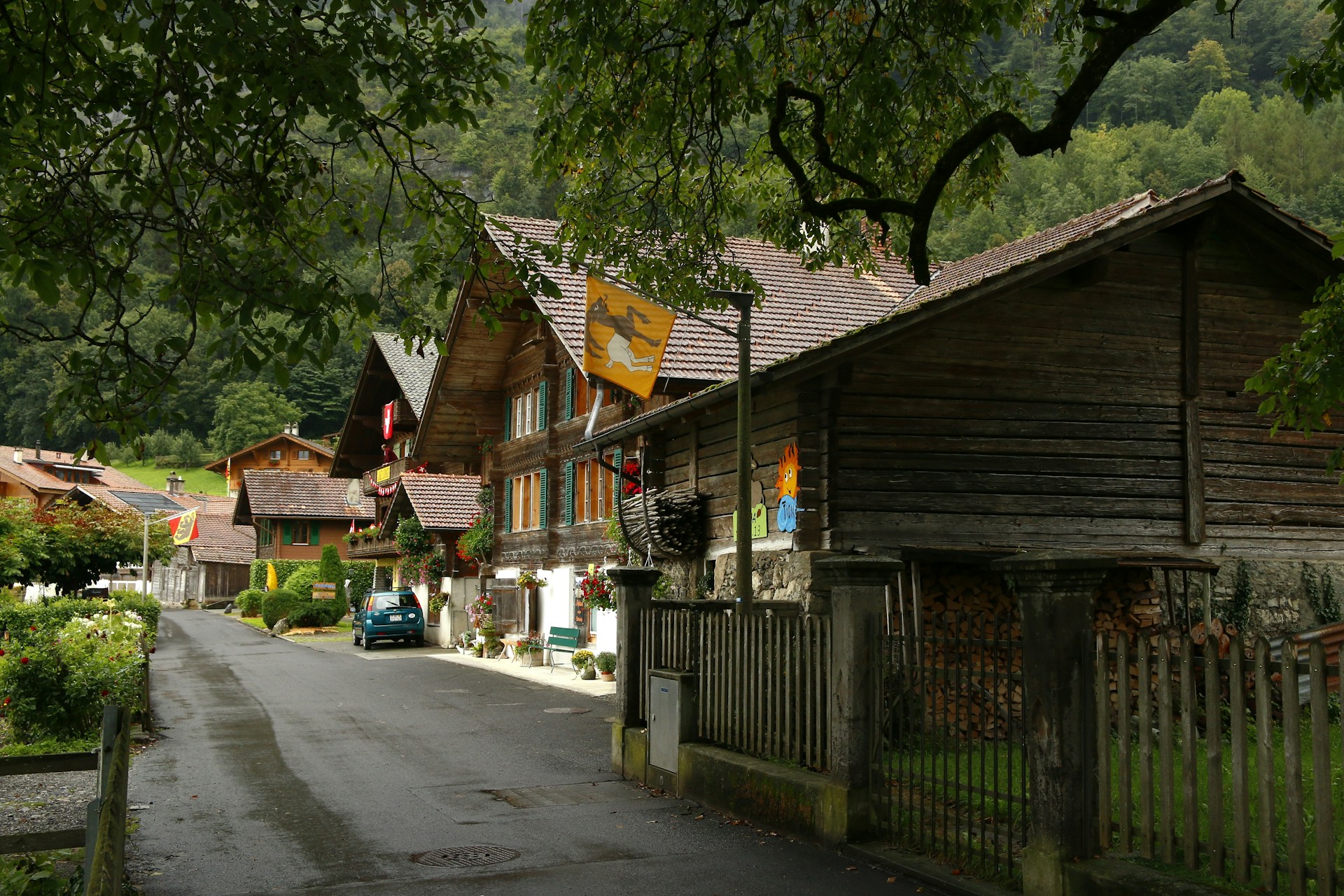
Picture a Bavarian village somehow transported to the Cascade Mountains, add some of the best cross-country skiing in the country, and you’ve got Leavenworth. This former logging town reinvented itself as a German-inspired destination, and they didn’t hold back—alpine architecture, German restaurants, and an Oktoberfest celebration that rivals Munich’s (okay, that’s a stretch, but after a few liters of beer, who’s counting?).
In winter, the town transforms into a twinkling wonderland with over half a million lights. Their Christmas lighting ceremony is so popular that hotels book up months in advance. But January and February are the real sweet spots—fewer crowds, abundant snow, and more affordable accommodation.
The nearby Stevens Pass ski area offers respectable alpine skiing, but Leavenworth truly shines for Nordic enthusiasts. The Leavenworth Winter Sports Club maintains over 26 kilometers of groomed trails, including some lit for night skiing. And unlike some winter destinations that roll up the sidewalks at sunset, Leavenworth’s German beer halls and wine tasting rooms stay lively well into the evening.
During my visit, I stumbled upon an impromptu accordion concert at a local brewery. By midnight, the whole place was singing German drinking songs—most of us butchering the lyrics, but making up for it with enthusiasm. Some experiences you just can’t plan.
5. Bend, Oregon
The Pacific Northwest doesn’t always get the winter recognition it deserves, but snow enthusiasts in the know head to Bend. With 300 days of sunshine annually and Mount Bachelor just 22 miles away, it offers that rare combination of abundant snowfall and blue skies.
Mount Bachelor is a sleeping volcano that wakes up in winter—not with eruptions, thankfully, but with some of the most varied terrain in the Pacific Northwest. Its circular shape means you can ski 360 degrees from the summit, following the sun throughout the day. And with a summit elevation of 9,065 feet, it catches snow when lower resorts might be getting rain.
What makes Bend special is its versatility. You can spend the morning skiing powder, the afternoon mountain biking in the desert (yes, really—the climate varies that dramatically), and the evening touring breweries. With more breweries per capita than nearly anywhere in the US, beer is practically its own food group here.
I met a couple who moved to Bend “temporarily” eight years ago and never left. After spending just a week there, I understood why. There’s something addictive about a place where outdoor adventure is the default setting, regardless of season.
6. Steamboat Springs, Colorado
Colorado has no shortage of famous ski towns, but Steamboat stands apart with its authentic western heritage and trademarked “Champagne Powder®”—a term they coined for their uniquely light, dry snow.
Unlike the purpose-built resorts that sprouted across Colorado’s mountains, Steamboat was a ranching town long before skiing came along, and that cowboy culture persists. The annual Winter Carnival features ski joring events where horses pull skiers through downtown streets, and local ranchers still sometimes ride horses to the supermarket (I thought this was a tourist myth until I saw it with my own eyes).
The skiing spans six peaks with terrain for everyone, but Steamboat especially shines for tree skiing. The perfectly spaced aspen groves create natural snow tunnels that are sheer joy to navigate. And those famous hot springs? Pure bliss after a day on the slopes. Strawberry Park Hot Springs, tucked in the forest about 7 miles from town, is a primitive-feeling collection of stone pools with varying temperatures. They’re clothing-optional after dark, which… creates some interesting scenarios when the temperature is 10°F and you’re trying to make it from the changing hut to the water without your towel freezing solid.
Winter Escapes Beyond Skiing
7. Yellowstone National Park, Wyoming/Montana/Idaho
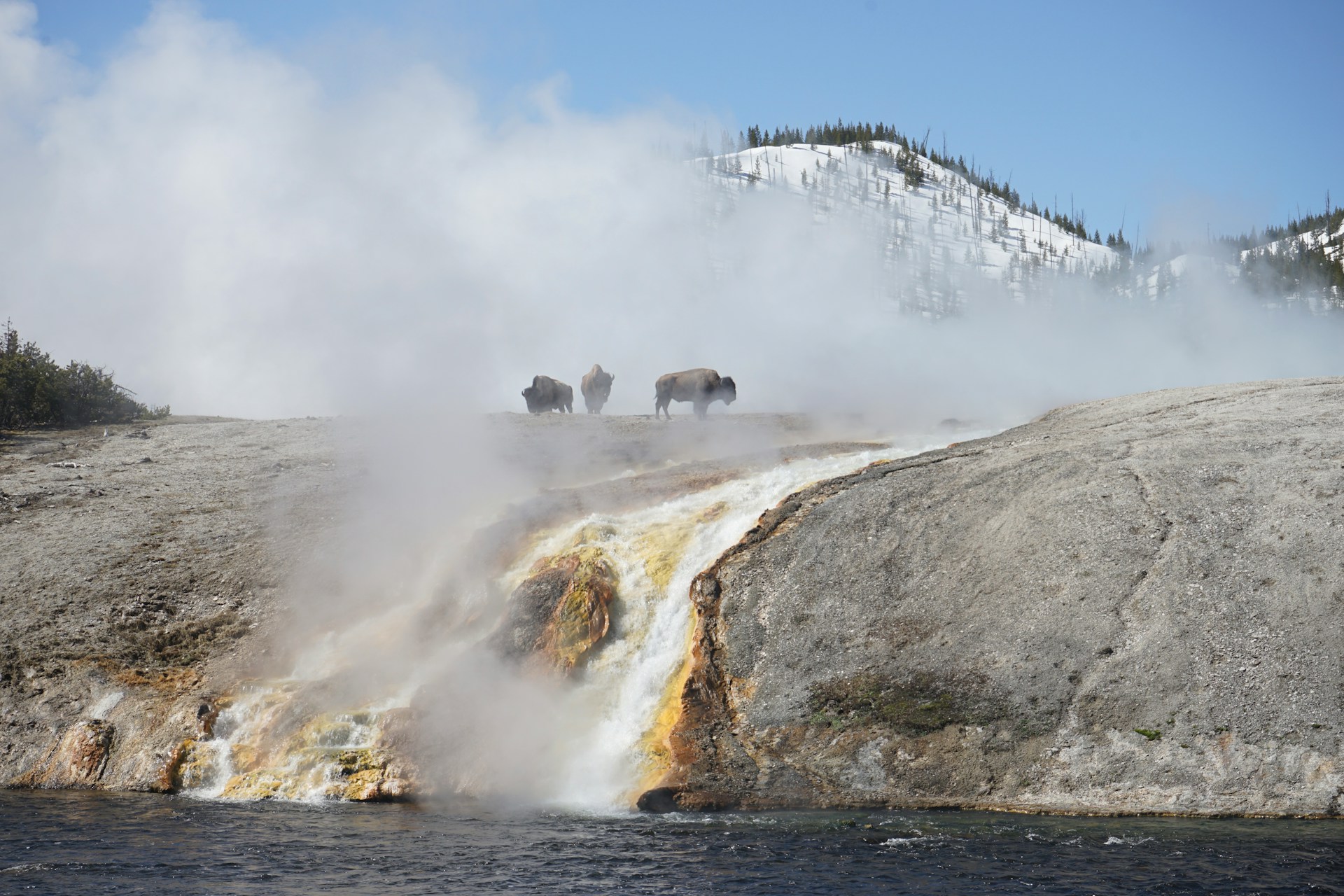
Most visitors experience Yellowstone in summer, fighting crowds to glimpse geysers and wildlife. Winter visitors, however, get a completely different park—one that’s eerily quiet, starkly beautiful, and far less populated.
Private vehicles can’t access most of the park in winter, which means you’ll explore via guided snowmobile or snowcoach tours, cross-country skis, or snowshoes. This limitation becomes a blessing as you glide silently past steaming thermal features without another soul in sight.
The juxtaposition of extreme elements creates otherworldly scenes—geysers erupting against snowy backdrops, bison with frost-covered faces plowing through deep drifts, and fog rising from rivers that remain unfrozen due to geothermal heat.
I took a snowcoach to Old Faithful one February morning, arriving just as the sun was rising. As the famous geyser erupted on schedule, the spray instantly crystallized in the frigid air, creating diamond-like ice particles that glittered as they fell. With only four other visitors present—compared to the thousands who crowd the boardwalks in July—it felt like a private showing of one of nature’s great spectacles.
Staying overnight within the park at Old Faithful Snow Lodge or Mammoth Hot Springs Hotel allows you to experience the thermal basins at dawn and dusk when they’re at their most magical. Just be prepared for truly cold temperatures—we’re talking potential -20°F nights. As my guide cheerfully informed me, “There’s no such thing as bad weather, just inadequate clothing.”
8. Door County, Wisconsin
The Midwest deserves a spot on any comprehensive winter list, and Door County—a peninsula jutting into Lake Michigan—delivers winter charm without alpine elevation. This collection of small towns transforms into a snow globe scene when winter arrives, with frozen harbors, lighthouses encased in ice, and a distinctly Scandinavian approach to embracing the cold.
Winter activities focus on cross-country skiing, snowshoeing, and fat tire biking through state parks and nature preserves. Peninsula State Park offers 16 miles of groomed trails winding through forests and along bluffs overlooking the frozen bay.
The real highlight, though, is the food and drink scene. Farm-to-table was never a trend here—it’s just how they’ve always eaten. Supper clubs serve brandy old fashioneds and massive prime ribs, local distilleries offer warming cherry brandies, and bakeries sell Scandinavian krumkake and cardamom-scented pastries.
I went ice fishing with a local guide who insisted we bring along a thermos of “Swedish coffee”—which turned out to be regular coffee liberally spiked with aquavit. Sitting on the frozen bay at sunset, sipping this potent concoction while waiting for northern pike to bite, I discovered the true meaning of “hygge”—that untranslatable Danish concept of coziness and contentment.
Making the Most of Your Winter Getaway
The key to enjoying winter travel is proper preparation. Nothing ruins a snow vacation faster than being cold, wet, and miserable. Trust me, I’ve made every winter packing mistake possible (cotton base layers in Vermont—rookie error).
Layer, layer, layer. Start with moisture-wicking base layers (merino wool is worth every penny), add insulating mid-layers, and top with waterproof outer shells. Pack more socks than you think you need, and invest in proper boots rated for cold temperatures.
Don’t forget the extremities—good gloves or mittens, neck gaiters, and hats are essential. And sunscreen! The snow reflects UV rays, and nothing says “winter tourist” like a raccoon sunburn around your goggle line.
If you’re planning on skiing or snowboarding and aren’t bringing your own gear, reserve equipment in advance—especially during holiday periods when rentals can sell out. Many resorts offer package deals that include lift tickets and rentals at a discount.
For accommodation, location matters more in winter than in other seasons. Being able to walk to restaurants and activities means you won’t have to navigate potentially icy roads after dark. If you’re staying slope-side at a ski resort, look for true ski-in/ski-out properties rather than those advertising “ski access,” which can sometimes mean a shuttle ride or lengthy walk.
The Winter Trip That Changed Everything
I have to end with Whitefish, Montana—the trip that converted me from a winter skeptic to an enthusiast. This unpretentious town near Glacier National Park doesn’t have the name recognition of Aspen or Park City, and that’s precisely its charm.
Whitefish Mountain Resort offers 3,000 acres of skiable terrain with views of Glacier and Canada beyond. On clear days, the scenery is so distracting I’ve literally skied into trees while gawking at the landscape. The mountain gets regular dumps of light, dry snow, and because it’s relatively uncrowded, untracked powder can last for days rather than hours.
The town itself hits that sweet spot of authentic without being primitive. The restored 1920s train depot welcomes Amtrak’s Empire Builder daily, and the main street features a mix of old-school bars where locals actually outnumber tourists and enough good restaurants to keep foodies happy.
But what made this trip transformative wasn’t the skiing or the town—it was a guided snowshoe trek through Glacier National Park. With the famous Going-to-the-Sun Road closed to vehicles and most visitors gone, we had this crown jewel of the national park system virtually to ourselves.
Our guide, a former wildlife biologist with the park service, pointed out wolf tracks crossing our path and taught us to identify trees by their bark and branches. As we stopped for lunch beside a frozen waterfall, a family of otters appeared, sliding down snow banks and playing in a small section of unfrozen creek with such obvious joy that we all fell silent, watching their natural water park antics.
That moment—standing in knee-deep snow, watching wildlife at play in a landscape so beautiful it hurt to look at it—cemented my conversion to winter devotee. I finally understood why people willingly live in places where exposed skin can freeze in minutes and cars need to be plugged in overnight.
Winter isn’t something to be endured—it’s something to be celebrated. In the right location, with the right gear and the right attitude, it’s pure magic.
So which snowy corner of America will you explore this winter? Wherever you choose, embrace the season fully. As my Vermont innkeeper sagely advised: “If you can’t beat the winter, you might as well join its party.”
Top Winter Destinations & Recommendations
Ski Resorts Worth Your Time (and Money)
- Jackson Hole Mountain Resort, Wyoming
Official Website
Famous for its challenging terrain and reliable snowfall, with 4,139 feet of vertical drop and over 2,500 acres of skiable terrain. - Palisades Tahoe, California
Official Website
Olympic legacy resort with diverse terrain spanning 6,000 acres across two mountains connected by a base-to-base gondola. - Stowe Mountain Resort, Vermont
Official Website
Eastern skiing at its finest with Vermont’s highest peak and a charming historic village at the base. - Mount Bachelor, Oregon
Official Website
Unique volcanic cone offering 360-degree skiing from the summit and one of the longest seasons in the Pacific Northwest. - Steamboat Resort, Colorado
Official Website
Home to trademarked “Champagne Powder®” and legendary tree skiing across 2,965 acres of diverse terrain.
Lodging That Makes Winter Magical
- Whiteface Lodge, Lake Placid, NY
Booking Information
Rustic-luxe Adirondack retreat with massive stone fireplaces, an indoor/outdoor pool, and suites with full kitchens. - Fairmont Chateau Lake Louise, Alberta, Canada
Booking Information
Iconic property on the shores of frozen Lake Louise with an ice castle, skating rink, and access to three world-class ski areas. - Sun Valley Lodge, Idaho
Booking Information
Historic lodge where Hollywood stars have been escaping since the 1930s, recently renovated with modern luxury while preserving its heritage charm. - Hotel Terra, Jackson Hole, Wyoming
Booking Information
Eco-conscious luxury at the base of Jackson Hole Mountain Resort with a rooftop hot tub offering spectacular Teton views. - Timberline Lodge, Mt. Hood, Oregon
Booking Information
Historic WPA-era mountain lodge made famous in “The Shining” offering the only year-round skiing in North America.
Winter Gear Worth Investing In
- Smartwool Merino 250 Base Layers
Official Website
Temperature-regulating, odor-resistant merino wool that keeps you warm even when wet—a game-changer for winter comfort. - Black Diamond Guide Gloves
REI Link
Waterproof, breathable gloves with removable liners that have saved my fingers in -20°F conditions. - Sorel Caribou Boots
Official Website
The original winter boot that still sets the standard for warmth, waterproofing, and traction on ice and snow. - Smith I/O MAG ChromaPop Snow Goggles
Official Website
Interchangeable lenses with exceptional color definition for varying light conditions, from bright sun to flat light snowstorms. - Osprey Kamber/Kresta Snow Packs
REI Link
Technical backpacks designed specifically for winter sports with dedicated avalanche tool pockets and ski/snowboard carry systems.
Winter Experiences You Shouldn’t Miss
- Yellowstone Winter Wolf Watching
Tour Booking
The Lamar Valley becomes “America’s Serengeti” in winter, with wolves and other wildlife highly visible against the snow. - Ice Climbing in Ouray, Colorado
Guide Service
The “Ice Climbing Capital of America” features a man-made ice park with over 200 routes in a stunning natural gorge. - Dog Sledding in Minnesota’s Boundary Waters
Tour Booking
Multi-day dog sledding expeditions through pristine wilderness with nights spent in remote cabins. - Winter Stargazing in Bryce Canyon National Park
Park Information
Designated Dark Sky Park with ranger-led astronomy programs and the surreal sight of snow-covered hoodoos under starlight. - Visiting Ice Castles in New Hampshire
Official Website
Walkable art installations made from hundreds of thousands of icicles hand-placed by ice artists, illuminated by color-changing LED lights.
FAQs About Winter Travel in the US
Q: When is the best time to visit snowy destinations in the US?
A: January and February typically offer the most reliable snow conditions across the country. December can be hit-or-miss depending on the region, while March often provides a great combination of accumulated snow base, warmer temperatures, and longer daylight hours. Avoid holiday periods (Christmas/New Year and Presidents Day weekend) for lower prices and shorter lift lines.
Q: Which US destinations have guaranteed snow in winter?
A: No destination can truly guarantee natural snow, but areas with the most reliable snowfall include Mount Baker in Washington (which holds the world record for most snowfall in a season), the Teton Range in Wyoming, Utah’s Cottonwood Canyons (Brighton, Solitude, Snowbird, Alta), and Colorado’s Wolf Creek. Many resorts also have extensive snowmaking capabilities to supplement natural snow.
Q: What are the most affordable ski resorts in America?
A: Look to smaller, independent ski areas for better value. Standouts include Grand Targhee in Wyoming, Bridger Bowl in Montana, Loveland in Colorado, Mount Bohemia in Michigan, and Purgatory in Colorado. Consider mid-week visits, multi-day tickets, and season passes like the Indy Pass that covers multiple independent resorts nationwide.
Q: Where can I find winter activities for non-skiers in the US?
A: Many winter destinations offer extensive non-skiing activities. Yellowstone National Park provides snowcoach tours and wildlife watching. Lake Placid, NY offers Olympic venue tours and bobsled rides. Leavenworth, WA features sleigh rides and winter festivals. Midway, Utah’s crater allows year-round scuba diving in a geothermal spring. Most ski towns also offer snowshoeing, fat biking, dog sledding, and ice skating.
Q: Which US winter destinations are best for families with children?
A: Keystone, Colorado stands out with its Kidtopia program offering free activities and the industry’s only free ski program for kids 12 and under (with qualifying adult tickets). Other family favorites include Smugglers’ Notch in Vermont (with innovative children’s ski programs), Northstar California (with extensive beginner terrain), and Winter Park, Colorado (offering family-friendly terrain parks and tubing).
Q: What should I pack for a winter snow vacation?
A: Beyond the obvious winter clothing, don’t forget: hand/toe warmers, a good insulated water bottle (water freezes in standard bottles), lip balm with SPF, moisturizer for dry mountain air, microspikes for boots if you’ll be walking on ice, a buff/neck gaiter (more versatile than a scarf), and a waterproof phone case. For skiing: helmet liners, boot gloves, and a small backpack for carrying layers as weather changes.
Q: Are there good snow destinations on the East Coast?
A: Absolutely! While the mountains are smaller than western ranges, the East Coast offers excellent winter destinations. Maine’s Sugarloaf provides the most vertical drop east of the Rockies. Vermont’s Jay Peak averages more annual snowfall than many Colorado resorts due to the “Jay Cloud” weather phenomenon. New York’s Adirondack region offers Lake Placid’s Olympic heritage and Whiteface Mountain’s impressive 3,430-foot vertical drop.
Q: Which US destinations combine winter activities with hot springs?
A: Several mountain regions offer this perfect pairing. Steamboat Springs, Colorado has both public and primitive hot springs. Mammoth Lakes, California provides access to the Eastern Sierra’s wild hot springs. Thermopolis, Wyoming offers the world’s largest mineral hot spring just a short drive from winter recreation areas. Idaho’s Sun Valley/Ketchum area features both developed hot springs resorts and natural hot springs along rivers.
Q: What are the most scenic winter drives in America?
A: When road conditions allow, consider: Going-to-the-Sun Road in Glacier National Park (the lower sections that remain open), the Million Dollar Highway between Ouray and Silverton, Colorado, Lake Tahoe’s scenic drive around the lake, Oregon’s Columbia River Gorge with its frozen waterfalls, and the Kancamagus Highway through New Hampshire’s White Mountains. Always check road conditions and carry winter emergency supplies.
Q: How can I save money on winter accommodation at popular snow destinations?
A: Book midweek stays (Sunday-Thursday nights are typically 30-50% cheaper than weekends), look for lodging in nearby towns rather than at the resort itself (Park City vs. Heber City, UT), consider condo rentals with kitchens to save on dining costs, and travel during “shoulder seasons” (early December and late March/April). Many destinations offer package deals combining lodging and lift tickets at significant savings over purchasing separately.
